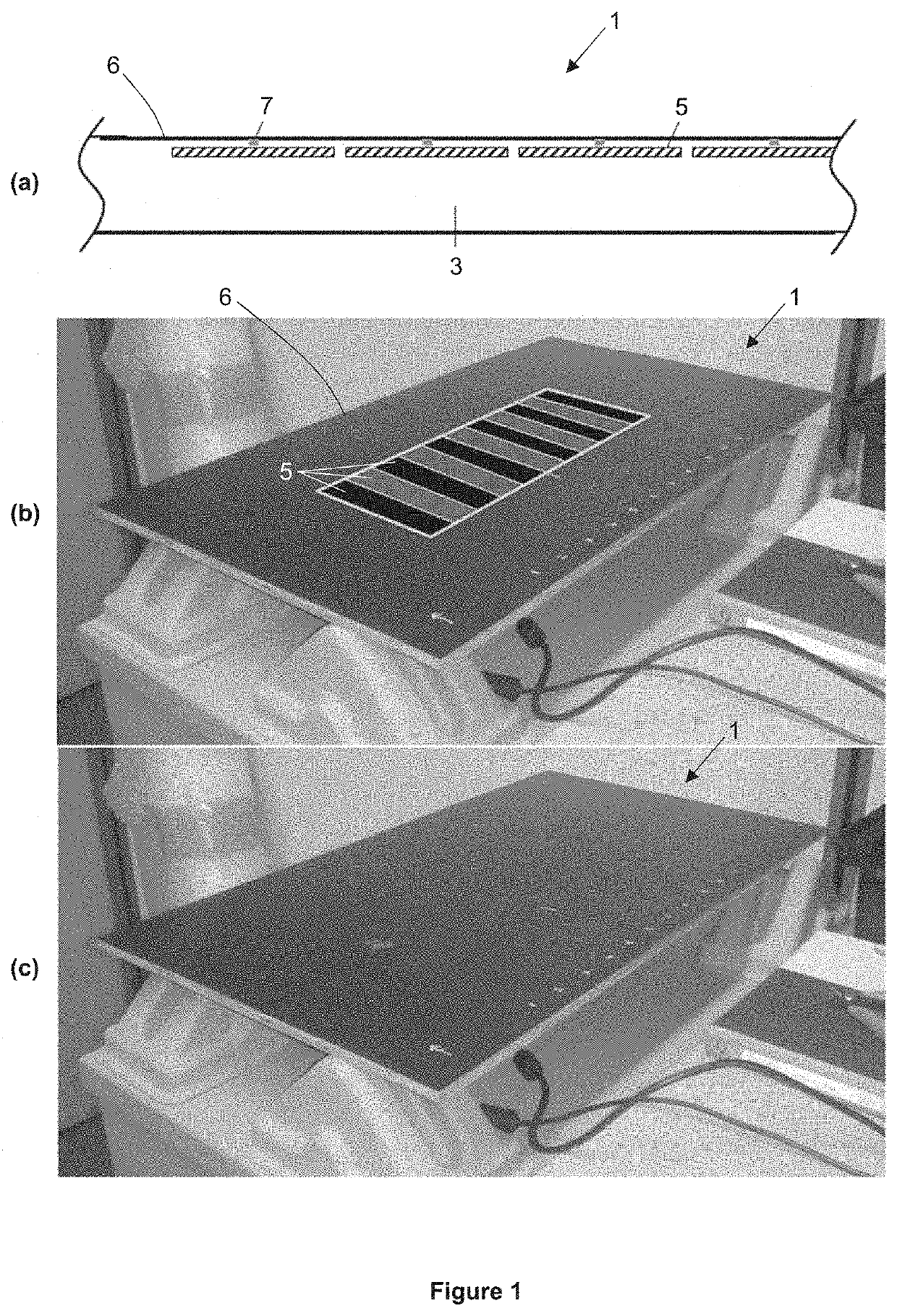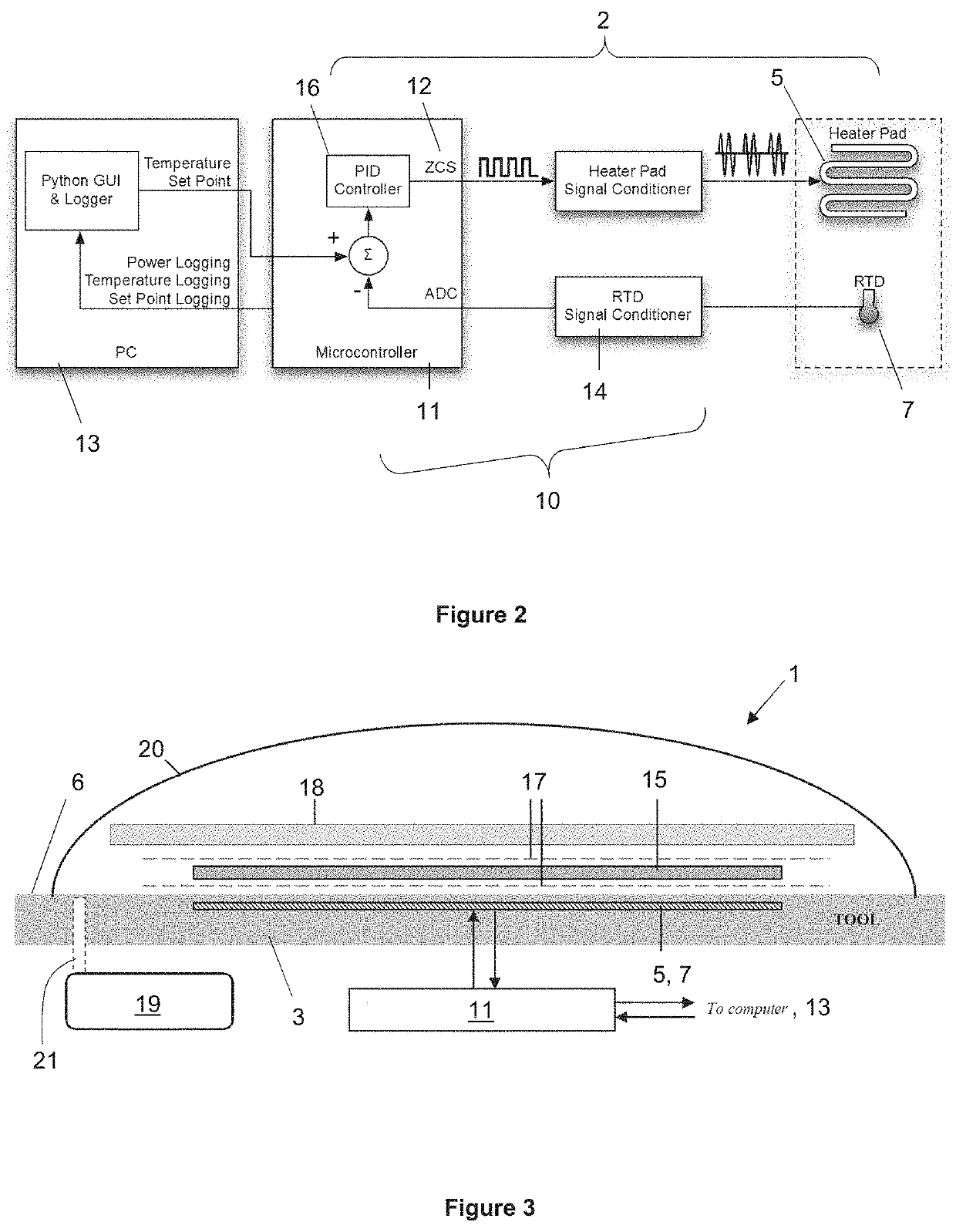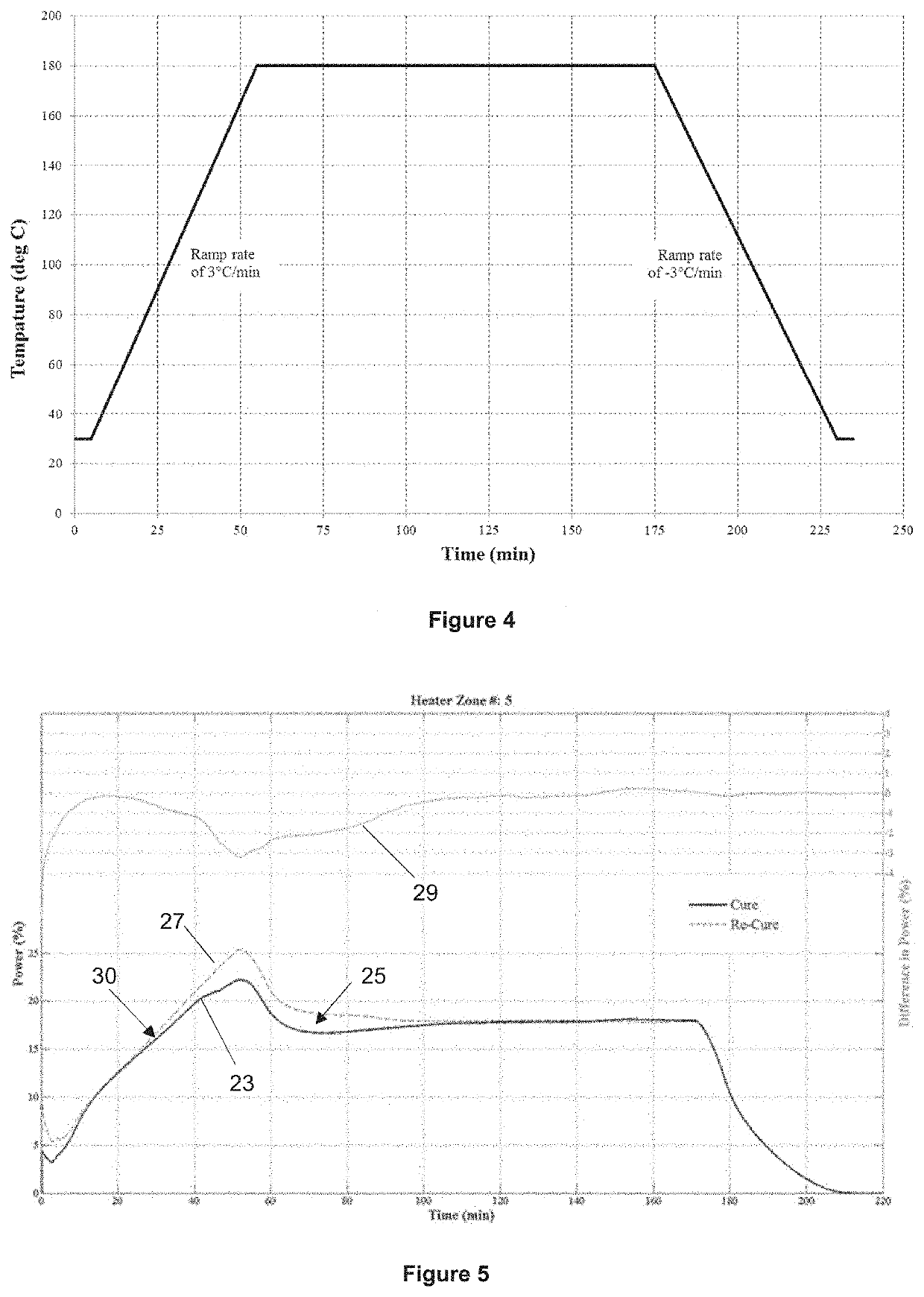Method and apparatus for curing a composite article
a composite article and curing technology, applied in the field of methods and heated tools for curing articles, can solve the problems of adversely affecting the final structural performance of the composite article, high capital expenditure, and high operating costs
- Summary
- Abstract
- Description
- Claims
- Application Information
AI Technical Summary
Benefits of technology
Problems solved by technology
Method used
Image
Examples
Embodiment Construction
[0119]A one-sided test tool was used to obtain data on curing of test composite articles, to demonstrate the principles of the invention.
[0120]A test curing tool is shown in FIG. 1(a)-(c). The tool 1 is formed of a glass fibre plate 3 (a mould), to act as a mould for curing a test composite article, with heat sources in the form of eleven embedded silicon heater pads 5 (an example of a heat source) and eleven corresponding thin film PT100 resistive temperature sensors 7 (also referred to as resistive temperature detectors, RTDs).
[0121]As shown in the schematic cross sectional view of FIG. 1(a), the heater pads 5 and the RTDs 7 are located close to the mould surface 6 of the plate 3. The RTDs 7 are centred above each heater pad 5 to facilitate regulation of the heat output of the respective pad. The selected RTDs provide an accurate and repeatable resistance signal that can be related to temperature (i.e. resistance of the RTD 7 being a temperature-related property) within the target...
PUM
| Property | Measurement | Unit |
|---|---|---|
| Temperature | aaaaa | aaaaa |
| Time | aaaaa | aaaaa |
| Power | aaaaa | aaaaa |
Abstract
Description
Claims
Application Information
 Login to View More
Login to View More - R&D
- Intellectual Property
- Life Sciences
- Materials
- Tech Scout
- Unparalleled Data Quality
- Higher Quality Content
- 60% Fewer Hallucinations
Browse by: Latest US Patents, China's latest patents, Technical Efficacy Thesaurus, Application Domain, Technology Topic, Popular Technical Reports.
© 2025 PatSnap. All rights reserved.Legal|Privacy policy|Modern Slavery Act Transparency Statement|Sitemap|About US| Contact US: help@patsnap.com



